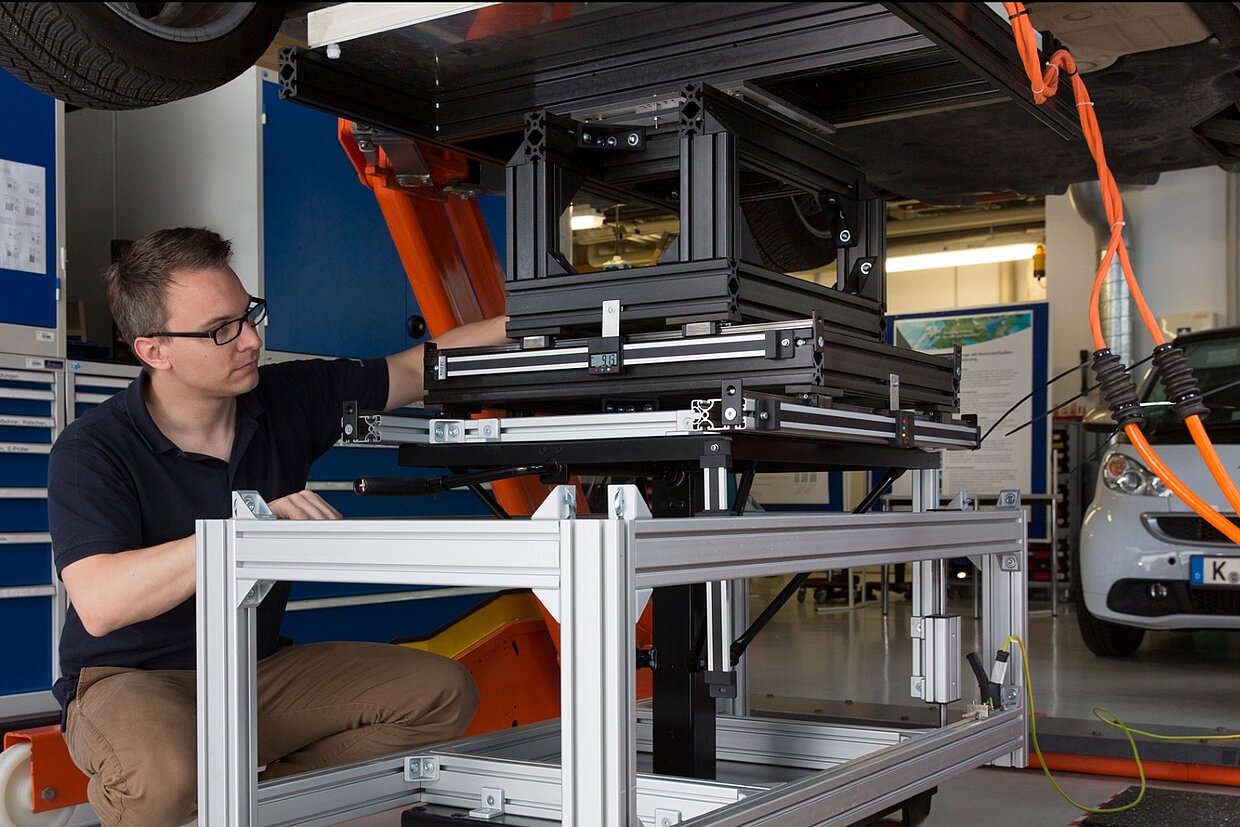
At the core of the project is the research and development of an inductive charging system for battery-electric vehicles, with a nominal transmission power of up to 22kW.Special demands are made here on the packaging of the vehicle and the arrangement of the coils.
Most drivers of cars running on an internal combustion engine may view refuelling as a necessary evil, but it is not a big problem. But the charging of electric vehicles is a different story. Here, long charging times and involved handling of charging cables are firmly entrenched in people’s minds as the disadvantages associated with electric mobility. This is because charging by cable means a certain amount of organisation effort, and also involves unappealing waiting times. This means that more user-friendly charging systems must be developed to make electric vehicles more suitable for day-to-day living, and thus also more attractive.

The aim of the BIPoLplus project is to produce a quick charging system in which the energy is transmitted between the charging station and the electric vehicle without any contact. The key focus of the project is to research the technical conditions necessary for the charging station and for the components of the vehicle itself, with the aim of achieving a charging power of 22 kW. This also involves the challenge of optimising constructed space, weight, and safety aspects of the system. Other key areas of focus include the overall control of the charging process, including the communication between the charging station and the vehicle, and integration of the charging system in the power grid.
Such a quick charging system would be completely new for electric mobility. For the user of the vehicle, contactless energy transmission and high charging power translate into a considerable increase in convenience for the user, with a drastic reduction in charging time at the same time.
Group coordinator
Project period
Project partners
Funded by the Federal Ministry of Education and Research (BMBF)